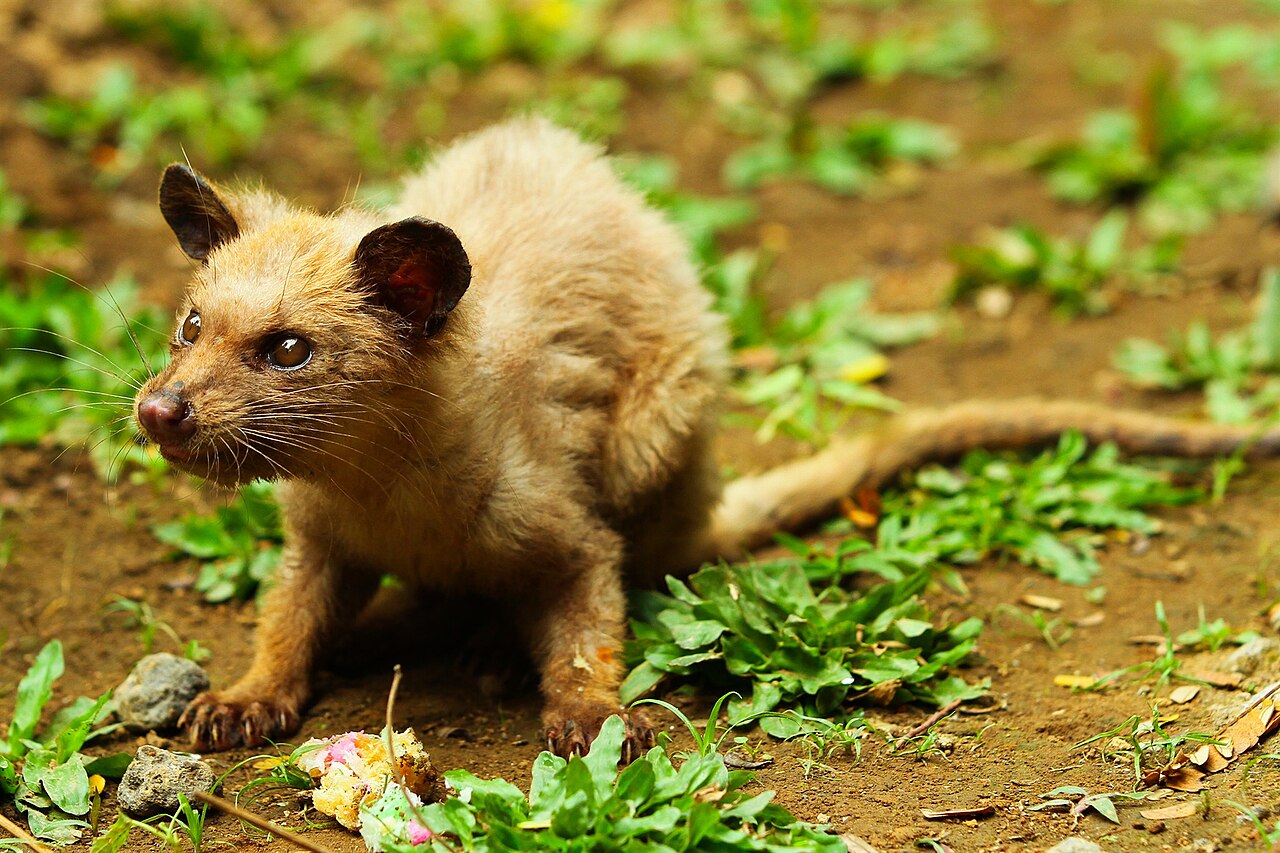Kopi luwak (Indonesian pronunciation: [ˈkopi ˈlu.aʔ]), or civet coffee, is coffee that includes partially digested coffee cherries, eaten and defecated by the Asian palm civet(Paradoxurus hermaphroditus). Fermentation occurs as the cherries pass through a civet's intestines, and after being defecated with other fecal matter, they are collected.
Kopi luwak is produced mainly on the Indonesian islands of Sumatra, Java, Bali and Sulawesi, and in East Timor. It is also widely gathered in the forest or produced in farms in the islands of the Philippines, where the product is called kape motit in the Cordillera region, kapé alamíd in Tagalog areas, kapé melô or kapé musang in Mindanao, and kahawa kubing in the Sulu Archipelago. Weasel coffee is a loose English translation of its Vietnamese name cà phê Chồn.
Producers of the coffee beans argue that the process may improve coffee through two mechanisms, selection – civets choosing to eat only certain cherries – and digestion – biological or chemical mechanisms in the animal's digestive tract altering the composition of the coffee cherries.
The traditional method of collecting feces from wild civets has given way to intensive farming methods in which civets in battery cage systems are force-fed the cherries. This method of production has raised ethical concerns about the treatment of civets due to "horrific conditions" including isolation, poor diet, small cages and a high mortality rate.
Although kopi luwak is a form of processing rather than a variety of coffee, it has been called one of the most expensive coffees in the world, with retail prices reaching €550 / US$700 per kilogram.
 The luak, that's a small catlike animal, gorges after dark on the most ripe, the best of our crop. It digests the fruit and expels the beans, which our farm people collect, wash, and roast, a real delicacy. Something about the natural fermentation that occurs in the luak's stomach seems to make the difference. For Javanese, this is the best of all coffees—our Kopi luak.
The luak, that's a small catlike animal, gorges after dark on the most ripe, the best of our crop. It digests the fruit and expels the beans, which our farm people collect, wash, and roast, a real delicacy. Something about the natural fermentation that occurs in the luak's stomach seems to make the difference. For Javanese, this is the best of all coffees—our Kopi luak.
Kopi is the Indonesian word for coffee. Luwak is a local name of the Asian palm civet in Sumatra.Palm civets are primarily frugivorous, feeding on berries and pulpy fruits such as figs and palms. Civets also eat small vertebrates, insects, ripe fruits and seeds
Initially, civet coffee beans were picked from wild civet excrement found around coffee plantations. This unusual process contributed to its rarity and subsequently its high price. More recently, growing numbers of intensive civet "farms" have been established and operated across Southeast Asia, confining tens of thousands of animals to live in battery cages and be force-fed.
Comments
Post a Comment